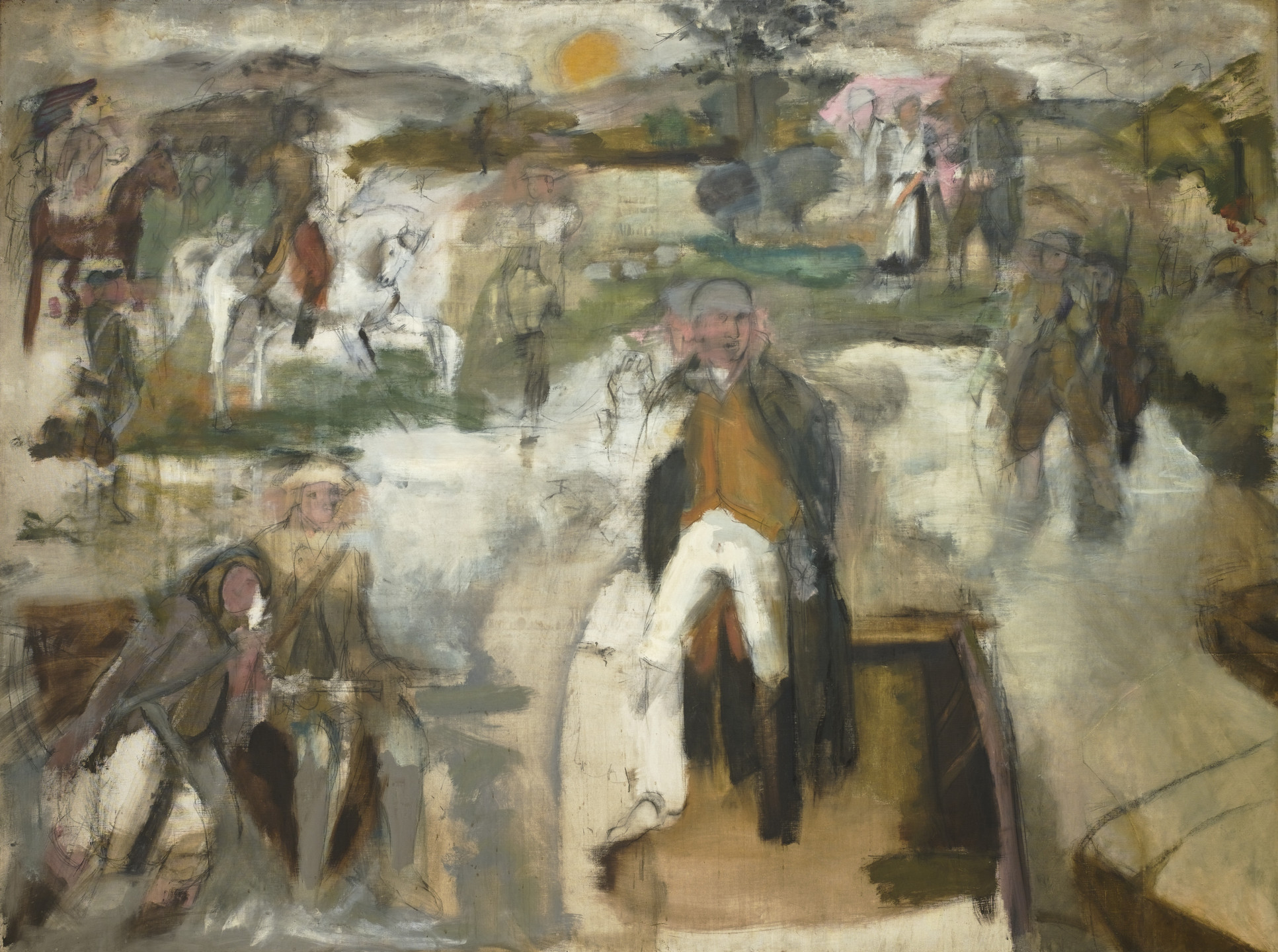What we need to know is always present with us. What is required is the courage to stumble over the familiar, over ourselves, to discover them anew, for the first time. View the study sheet here. Watch the recording here.

Today we tend to associate Switzerland with rigorous neutrality in matters of foreign affairs. However, during the Middle Ages, one of the most formidable military infantries in Europe was the Swiss pikemen. So ferocious were these fighters in defense of their homeland that from the 14th to the 19th centuries, they became the most sought-after mercenaries across the continent.
Subject to long, extended deployments far from home, these Swiss mercenaries reported experiencing anxiety, lack of sleep and appetite, and heart palpitations. In 1688 Swiss physician Johannes Hofer coined the term “nostalgia” for this syndrome, from the Greek nostos (homecoming) and alga (pain). The longing to go back, to return home, to the familiar, was felt as an acute pain.
As recently as the early 20th century nostalgia was classified as a form of melancholia, as a mentally repressive compulsive disorder, and as an immigrant psychosis, felt by those separated by distance or time from the familiar.
Recent studies, however, distinguish between helpful and harmful nostalgia. Harmful nostalgia (nostomania) is a renouncing of the present for the sake of reinstating and perpetually reliving some moment in the past. Helpful nostalgia incorporates into the present the positive emotions of reminiscing.
Engaging in nostalgia can access personally meaningful events shared with family, friends and other close connections. Reflecting on such memories can induce a greater sense of attachment, purpose, and resilience. Experiments have shown that those who have experienced a devastating loss can emerge from it less depressed, less lonely and more optimistic through nostalgic reflection.
A recent article in the Harvard Business Review stated that managers can use nostalgia, an adaptive feature of human psychology, in order to create a better organization. Nostalgia, rooted in a desire for existential purpose and connection can help build strong work teams, reduce turnover, and inspire a more creative workplace.
In short, a healthy return to the past can transform individuals and groups in the present to face the future with greater optimism, purpose and creativity.
Torah portion Matot-Masei brings us to the end of the book of Numbers and to the end of the Israelites’ journey. The book of Deuteronomy, consisting of Moses’ reminiscences and a reiteration of laws and rites, is empty of narrative, of human action. With this week’s portion the Israelites reach the end of their travels in the Five Books of Moses. The actual crossing over into the promised land will take place in the book of Joshua.
And this ending takes us back to the journey’s beginning. The artist’s hand is at work here, designing a message about beginnings and endings. The words which give title to this closing portion, matot (tribes) and masei(marches), are the very ones which gave shape and meaning to the opening of Numbers. There we read that all of Israel was assembled according to their matot and the people set out on their masei. As it is in the end, so it was at the beginning.
But in between beginning and end there is much stumbling: rebellion, complaints, collapse of leadership, impulsive passions, selfishness, arrogance. Yet, these stumblings are key to the Israelites reaching the threshold of a new world. They had to experience the worst aspects of themselves in order to become sovereigns of responsibility. They have reached the end, which is a reiteration of the beginning…but the people are transformed.
Larry Rivers was born in the Bronx, the son of Ukrainian Jewish immigrants. His birth name was Yitzroch Loiza Grossberg. Yitzroch was an enthralled and avid musician from an early age. He played jazz saxophone. At 17 his band played at a nightclub where the emcee introduced them as “Larry Rivers and the Mud Cats.” He immediately adopted the name.
A member of Rivers’ band was married to an artist, Jane Freilicher. She encouraged Rivers to try painting. At the time, the dominant movement in art was Abstract Expressionism, which contemptuously rejected objective figures as worthy artistic subjects. Instead, those artists insisted that the proper focus was the artist’s own emotional, psychological and spiritual experience. Vibrant colors and amorphous forms displaced the human figure.
Rivers proceeded from a conviction that figuration was not antithetical to modernism. It was an oppositional position that he was happy to make clear to the Abstract Expressionists. And he took pleasure in doing so as a mischief and a rascal.
His earliest works took paintings by some of the greats of art history – Rembrandt, Courbet, Manet – and reworked them. With a sense of humor and irony and showmanship, he re-imagined their pieces in a way that connected contemporary art with art history.
Pictured here is his painting Washington Crossing the Delaware. It is based on the classic work by Emanuel Leutze. Leutze painted Washington in a grand, heroic pose, as another Napoleon. Rivers irreverently pokes at both the unrealism and pomposity of Washington standing upright during such a crossing on a cold Christmas eve. Yet, by painting a human figure on a canvass in 1953, Rivers courageously honored a classic art trope while thumbing his nose at the reigning modernists.
Rivers’ reworking of tradition opened the floodgates for a new wave of art. Building on his embrace of common, recognizable objects (in 1984 he created a 30-foot long triptych titled The History of Matzah: The Story of the Jews), Pop artists reworked everyday subjects such as advertising products and comics so as to re-introduce viewers to what they thought they already knew. The familiar became estranged so that they might gain new meaning.
What we need to know is always present with us. What is required is the courage to stumble over the familiar, over ourselves, to discover them anew, for the first time. The rabbis of the Talmud put it this way: “A person does not understand [stand on] words of Torah unless one stumbles on them.” The modern poet T. S. Eliot wrote: We shall not cease from exploration/And the end of all our exploring/Will be to arrive where we started/And know the place for the first time.
Join us here at 7:00 p.m. (PT) Thursday, July 13 as we explore stumbling forward back to a new beginning.









